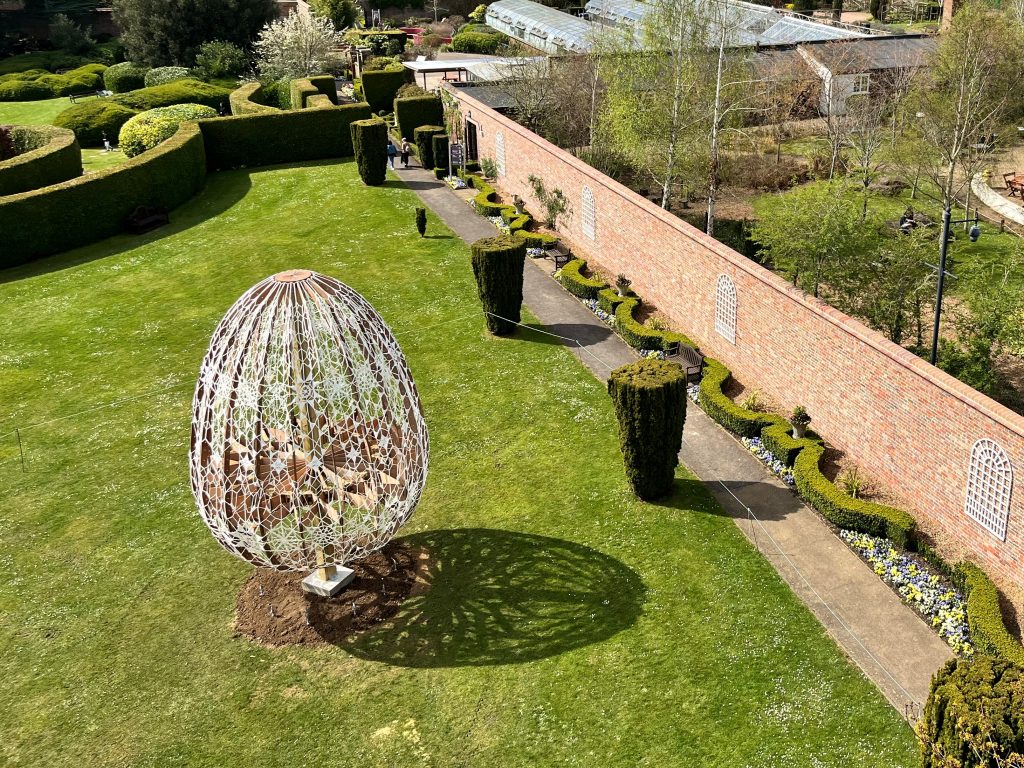Enjoy this article?
This area of Museums Journal is normally just for members. Join the MA to get full access to the latest thinking and trends from across the sector, case studies and best practice advice.

It is amazing what can be achieved with the support and efforts of a group of dedicated volunteers, and now more than ever they are essential to the on-going success of local museums and cultural organisations.
This case study explores the value of a structured volunteer group’s contribution to a large public art installation called The Lace Trees designed and developed by international architectural artists Choi + Shine (Jin Choi and Thomas Shine), and how challenges were overcome during this prolonged project.
Culture Trust Luton operates two local museums: Wardown House, Museum & Gallery and Stockwood Discovery Centre. A coordinated volunteer scheme Museum Makers was formed almost a decade ago and was critical in the redevelopment of Wardown House into a vibrant and cultural hub within the community back in 2017.
It was so successful that the model became an exemplar structure of coordinated volunteer work used throughout England. The programme boasts almost 1,600 members, and is organised and coordinated by NPO coordinator Jacqui Harding.
Museum Makers is a team of volunteers with a unique set of interests, comprising of individuals, groups and organisations giving their time, skills, and knowledge to Luton’s museums. With their talents, passion for their local community and heritage, they choose what “challenges” they accept and donate time in minutes, hours, days or longer.
This area of Museums Journal is normally just for members. Join the MA to get full access to the latest thinking and trends from across the sector, case studies and best practice advice.
Museum Makers come from all walks of life, including students, retirees, parents and children, young professionals and young people.
They answered the challenge to help create The Lace Trees, which is now in-situ at Stockwood Discovery Centre.

Luton has one of the best collections of old lace and patterns for Bedfordshire and Buckinghamshire bobbin lace at Wardown House, with materials reflecting every facet of an industry that was once of considerable economic and social importance across the East Midlands.
It was with this collection in mind, that Choi + Shine were approached in 2019 and an application made to the Arts Council England in January 2020. This made the Lace Trees project a natural fit and saw it become part of a wider programme of multiple satellite projects across three venues.
These projects include:
An exhibition of original art works created by second year students from the University of Bedfordshire Design and Creative Arts BA (hons) course, who were inspired by the historical lace collection held at Wardown House, Museum and Gallery.
A photographic exhibition organised by University of Bedfordshire students, which will be displayed at Stockwood Discovery Centre.
A display of garments at Wardown House, which was curated by another team of Museum Makers.
The Museum Makers participating in the Lace Trees project were challenged first to crochet large-scale patterned squares with a nylon cord, then to sew the crochet pieces together ultimately forming the canopy of the two Lace Trees structures.
The lace pattern was inspired by a selection of lace from the trust’s collection.
This project was an opportunity for Museum Makers and other volunteers to use or learn crochet and lace patterns, connecting memories of the past with the people from the area; to create a sense of community; and to create a beautiful work of art for the town.
These included:
Impacts from the project included:
The project owes much of its success to the expertise and in-depth experience of Jacqui Harding and Luton Culture’s cultural programmer Hafiza Mohamed.
Their rapport with the volunteers and the architectural artists respectively were crucial. Having a clear point of contact, clear messaging, personalised communication and an understanding of the local community underpinned this success.
Adapting quickly to the restrictions the global pandemic created, Jacqui and Hafiza maintained regular contact with the volunteers, keeping them updated on the project. They concentrated on digital communications, via private social media groups to maintain morale and enthusiasm so the volunteers could produce their crocheted square panels remotely, and the artists could support them directly.
Once restrictions were lifted, Museum Makers were able to get together to stitch the crochet panels together, forming the canopy of the Lace Trees.
Jacqui said: “I feel this project had a positive impact on mental health during the pandemic, reducing the isolation and giving us and our Museum Makers a sense of purpose. One volunteer was encouraged to participate because I personally took the time to drop off materials and resources to their home, giving her the confidence to get involved.”
One volunteer later remarked that the project “took me out of my comfort zone, but with some encouragement I made it. So proud” and that it “made me feel part of a team and not on my own during lockdown”.
Others commented: “We wanted to give something back after visiting so often” and that they were “proud to be a part of something so special”.
A well-run project resulted in many desirable outcomes and a legacy for all involved.
Amanda Evans is a communications writer
This area of Museums Journal is normally just for members. Join the MA to get full access to the latest thinking and trends from across the sector, case studies and best practice advice.